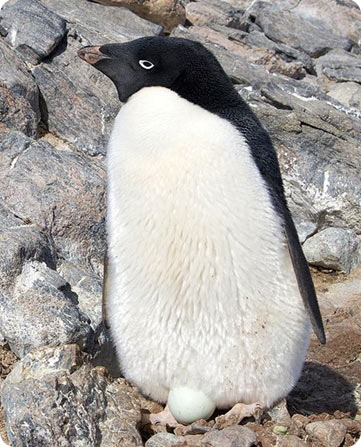191111-penguin.jpg

Adelie penguins return to the same breeding grounds each year. Credit: © Samuel Blanc - www.sblanc.com
They may not be able to fly, but like some of their airborne cousins, Adelie penguins follow the Sun. As the year goes by, they can migrate thousands of miles. In part, that’s to follow the Sun, finding areas with at least a few hours of sunlight per day. That suggests that the penguins must need at least some sunlight to survive.
Biologists found this affinity for the Sun by tracking several colonies of Adelies. The colonies live on or around Ross Island. As many as a half-million Adelies inhabit the island, which is off the coast of Antarctica in the Ross Sea.
Not only do the Adelies follow the Sun, they also seem to follow the path of least resistance.
Adelies return to the same breeding grounds each year they were born. But in 2000, large icebergs blocked access to the hunting grounds of one small colony. That meant the Adelies had to travel up to 30 miles just to find food − a trip they had to make every few days so they could return to their nests and relieve their mates.
So many of the penguins did something researchers hadn’t expected: they moved. Many of the colony’s 2500 nesting pairs found new homes that were much closer to the open water where the penguins feed.
That means the birds may be able to adapt to a changing climate more easily than expected, boosting their chances of survival. But as more sea ice melts, they may have to move farther inland, where there are fewer hours of sunlight during the winter months −something that could be much harder to survive.

